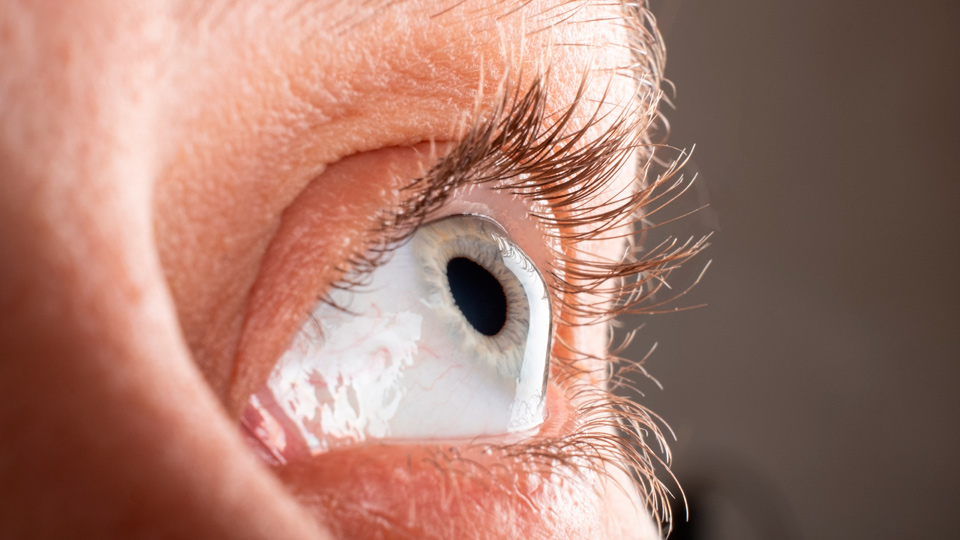Understanding the Two Main Types of Glaucoma: Open-Angle vs. Angle-Closure
11/07/2025

03/10/2024
Keratoconus is a progressive eye condition that affects the cornea, the clear, dome-shaped front surface of the eye. In individuals with keratoconus, the cornea gradually thins and weakens, causing it to bulge outward into a cone-like shape. This abnormal shape distorts vision, leading to symptoms such as blurred or double vision, increased sensitivity to light, glare, and difficulty seeing at night. The condition typically begins in adolescence or early adulthood and can worsen over time. While the exact cause of keratoconus is not fully understood, it is believed to be influenced by genetic and environmental factors, including eye rubbing, chronic eye irritation, and allergies.
Diagnosis of Keratoconus
Keratoconus is diagnosed through a comprehensive eye examination, including corneal topography, which maps the surface of the cornea and detects any irregularities in its shape. Other tests, such as pachymetry to measure corneal thickness and keratometry to assess curvature, may also be used. Early diagnosis is crucial to managing the condition effectively and preventing severe vision impairment.
Treatment Options for Keratoconus
The treatment of keratoconus varies depending on the severity of the condition. In its early stages, glasses or soft contact lenses may be sufficient to correct vision. However, as the condition progresses and the cornea becomes more irregular, more specialized treatments are often required.
1. Rigid Gas Permeable (RGP) Contact Lenses
RGP contact lenses are commonly prescribed for keratoconus. Unlike soft lenses, RGP lenses are made of a firm material that helps maintain their shape, allowing them to sit on top of the cornea and provide a smooth optical surface. This helps reduce the distortion caused by the irregular corneal shape. RGP lenses can significantly improve vision for many keratoconus patients, but they may take time to get used to due to their rigidity.
2. Hybrid Contact Lenses
Hybrid lenses combine the benefits of both soft and rigid lenses. They have a rigid center that corrects corneal irregularities and a soft outer skirt that provides greater comfort. Hybrid lenses are designed to improve vision while offering more comfort than traditional RGP lenses, making them a good option for individuals who struggle to tolerate RGP lenses.
3. Scleral Contact Lenses
Scleral lenses are larger in diameter than traditional contact lenses and rest on the sclera (the white part of the eye) rather than the cornea. This allows the lens to vault over the cornea, creating a tear-filled reservoir between the lens and the corneal surface, which improves both comfort and vision. Scleral lenses are particularly beneficial for advanced keratoconus and cases where other types of lenses fail to provide adequate vision correction.
4. Corneal Cross-Linking (CXL)
Corneal cross-linking is a treatment designed to slow or halt the progression of keratoconus. It involves applying riboflavin (vitamin B2) drops to the cornea and then exposing it to ultraviolet (UV) light. This process strengthens the collagen fibers within the cornea, making it more resistant to further thinning and bulging. Cross-linking does not reverse keratoconus but can stabilize the condition and prevent it from worsening.
5. Intacs
Intacs are small, crescent-shaped inserts that are surgically implanted into the cornea to help reshape it and reduce the cone-like bulge. This procedure can improve vision and may reduce the need for contact lenses or glasses. Intacs are typically recommended for moderate keratoconus cases where contact lenses are no longer effective.
6. Corneal Transplant
In severe cases of keratoconus where vision cannot be corrected with contact lenses or other treatments, a corneal transplant may be necessary. This involves replacing the damaged cornea with a healthy donor cornea. While this surgery can restore vision, it is usually considered a last resort due to the potential risks and recovery time involved.
Conclusion
Keratoconus is a challenging condition, but advancements in treatment, particularly with specialized contact lenses and corneal cross-linking, have improved outcomes for many patients. Early diagnosis and intervention are essential to managing the condition and preserving vision. For individuals with keratoconus, working closely with an eye care specialist to explore the most appropriate treatment options is key to maintaining good visual function and quality of life.